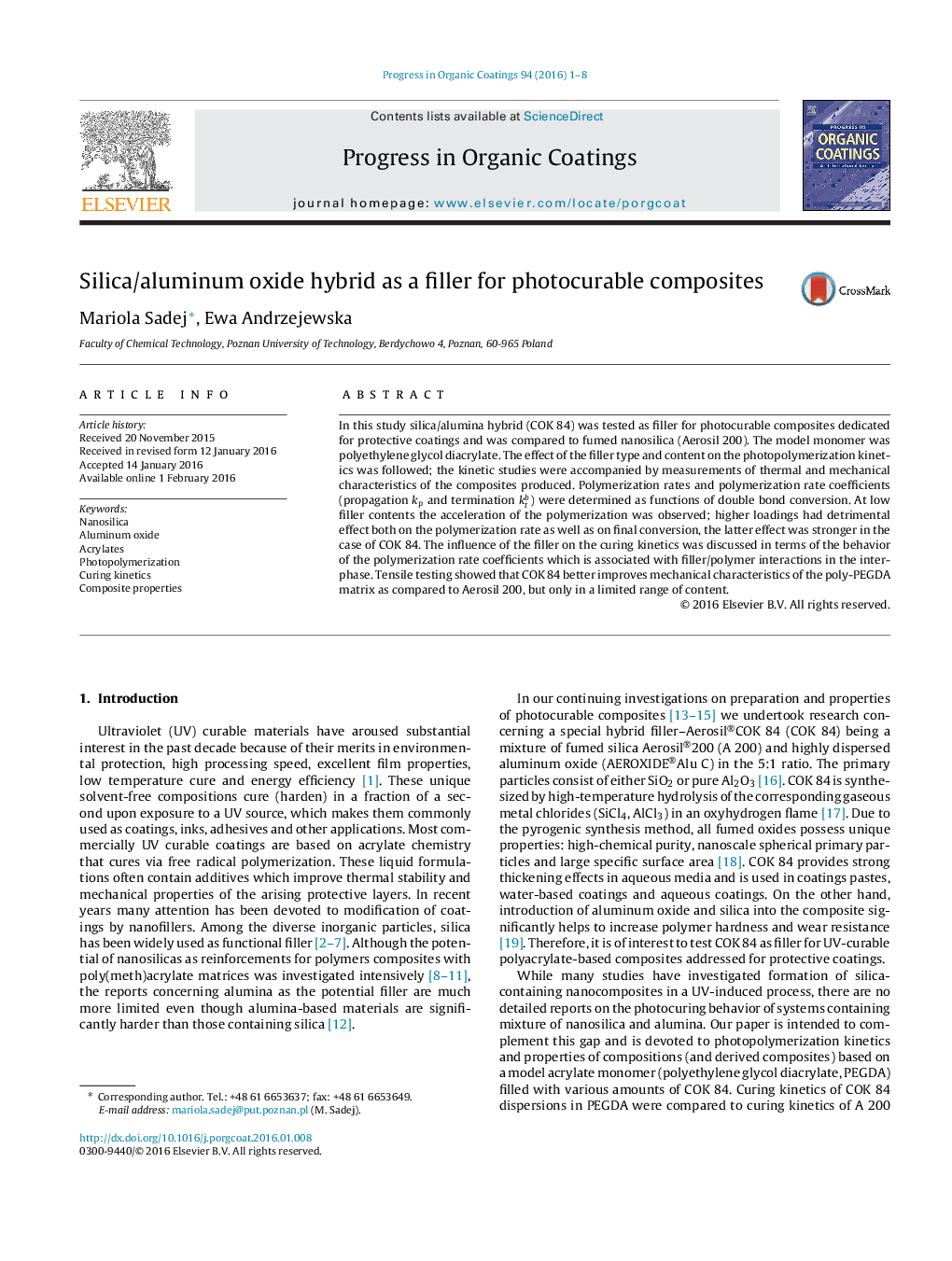| Article ID | Journal | Published Year | Pages | File Type |
|---|---|---|---|---|
| 692087 | Progress in Organic Coatings | 2016 | 8 Pages |
•silica/alumina hybrid COK 84 was tested as filler and compared to fumed nanosilica.•filler/monomer compositions were UV-cured.•propagation and termination rate coefficient were determined.•COK 84 better improves mechanical characteristics of the composites than nanosilica.
In this study silica/alumina hybrid (COK 84) was tested as filler for photocurable composites dedicated for protective coatings and was compared to fumed nanosilica (Aerosil 200). The model monomer was polyethylene glycol diacrylate. The effect of the filler type and content on the photopolymerization kinetics was followed; the kinetic studies were accompanied by measurements of thermal and mechanical characteristics of the composites produced. Polymerization rates and polymerization rate coefficients (propagation kp and termination ktb) were determined as functions of double bond conversion. At low filler contents the acceleration of the polymerization was observed; higher loadings had detrimental effect both on the polymerization rate as well as on final conversion, the latter effect was stronger in the case of COK 84. The influence of the filler on the curing kinetics was discussed in terms of the behavior of the polymerization rate coefficients which is associated with filler/polymer interactions in the interphase. Tensile testing showed that COK 84 better improves mechanical characteristics of the poly-PEGDA matrix as compared to Aerosil 200, but only in a limited range of content.
